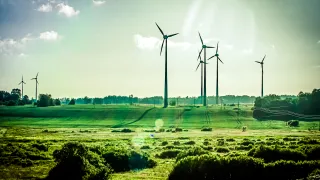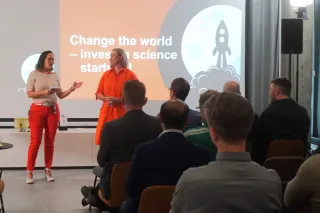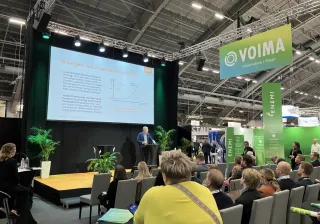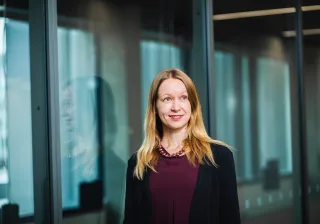How can Finland achieve its climate goals set for 2050 and enhance wellbeing? How will energy be produced and used?
VTT's long-term scenario work is providing answers to these questions. This involves the first computational analysis of Finland's potential in the bioeconomy and transition to a low-carbon economy, taking account of all industrial and emission sectors.
The IPCC is preparing a new report assessing what the global objective of limiting global warming to 1.5 degrees, as set by the Paris Climate Agreement, will entail.
– Meeting the 2050 targets will require a more distributed energy system and major investments in energy infrastructure. To make them genuinely sustainable in the long term, we must view energy solutions as part of a broader societal whole. They relate to all decisions and choices – both on the use of natural resources and issues such as social impacts, says Tiina Koljonen, Energy and Climate Specialist at VTT and one of VTT's Scenario Writers.
– VTT's vision is based on the idea that, in Finland, we use natural resources for high added value products. Although bioenergy will continue to be Finland's key source of renewable energy, we need to increase the share of other renewable energy. This is because natural resources will need to be used as efficiently as possible, and demand for domestic biomass is growing in many sectors, says Koljonen.
Bioenergy alongside solar and wind energy
– Biomass raw material, particularly wood, was the focus of the scenario work. Fulfilling the energy and climate objectives will require a major rise in the share of all renewable energy sources. The use of biomass for energy production will change when we add variable sources of renewable energy – solar and wind power. In Finland, we are moving towards a more distributed energy system in which bioenergy can serve as a fuel for vehicles, be used alongside other renewables, and even act as a form of energy storage.
Energy is linked to resource efficiency
– It is important that energy be both produced and used efficiently. A broader view should be taken of energy efficiency and it should be more strongly coupled with resource efficiency. The current discussions focus too narrowly on energy production, despite the fact that reducing consumption is at least as important, says Koljonen.
Abandoning oil and carbon will require major changes in the industrial infrastructure. This would also require change elsewhere in the world – particularly in the steel and cement industry. Resource efficiency will also help in this respect – the less we consume and the more we recycle, the less fossil and other natural resources we will use.
Carbon capture and storage will play an important role in achieving the climate goals. Finland's opportunities lie in areas such as climate-friendly solutions. These include Bio-CCS technology, which would constitute a net carbon sink in practice, by removing carbon dioxide from the atmosphere. Uncertainties remain about the widespread adoption of technology. Recovered carbon dioxide can be used and processed into synthetic fuels, for example.
The strength of Finland's energy structure lies in its versatility. It offers good opportunities to step up the use of renewable energy: bioenergy, hydropower, solar, wind and geothermal energy. Another strength can be found in Finland's cleantech cluster, i.e. clean, smart and flexible energy solutions.
The role of the consumer is highlighted
– Smart solutions will make consumers, too, into energy producers. People are talking about the prosumer – consumers who both consume and produce energy. For example, electric car batteries could be used for electrical storage in the future. By making every place and device smart, the entire system could be remodelled to flexibly match energy production with consumption at every point, says Koljonen.
Finland is lagging behind in achieving the objective, set in the Paris Climate Agreement, of curbing climate change well below two degrees. In fact, it is very unclear how big a challenge this involves in general.
– Solutions exist, but the markets are not ready for their widespread adoption. We need a boldly forward-looking strategy, shared willingness and supportive political decision-making in order to make a change in the operating environment that enables companies to make new, market-based investments at an accelerated pace.
– The kinds of choices that consumers make are a key issue in every respect. The market testing of new solutions is important, in order to inspire consumers and get them to invest in clean energy.
– We face opportunities rather than challenges. Excellent know-how and technology are available. For example, distributed, renewable energy systems, low-emission transport solutions and new industrial concepts have developed at amazing speed. More ambitious policy goals are needed, in order to move towards clean solutions on a broad and sufficiently rapid basis. Subsidies cannot be relied on forever, and they distort the market, says Koljonen.





